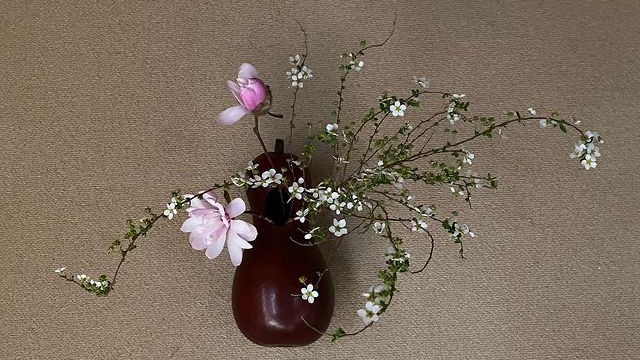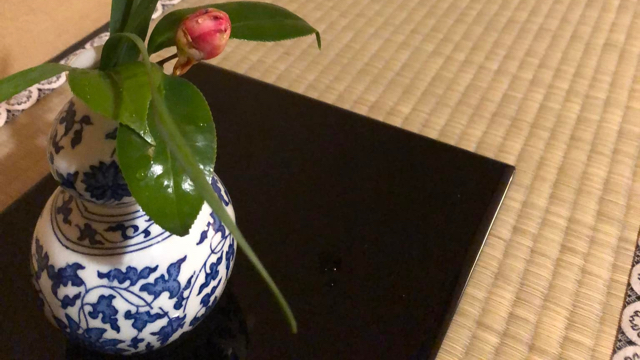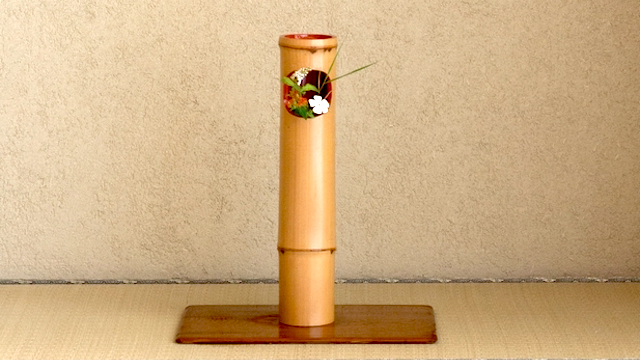
A gourd vase is made by hollowing out the core of a natural gourd.
It is also called "hisago hanare".
It is said that Sen no Rikyu requested the gourd that the pilgrims wore around their waists, cut off the upper part of the gourd, attached a ring to the back, and made it into a hanging flower container, which was named 'Kaokai'.
The inscription "Gankai" is named after "Ziyo, Kenya Taya, eating a bowl of wine, drinking a glass of gourd, living in the streets, people are unbearably worried, Tameya Fukai soraku, Kenya Taya" in the Analects. It's a thing.
In 1738, Toyoyuki Matsui, chief retainer of the Hosokawa family, presented the kankai to the fifth lord of the Hosokawa clan, Munetaka Hosokawa.

Metal vases and Chinese ceramic vases are considered to be of high rank, followed by Japanese glazed and unglazed ceramic vases.
陶磁器
Madake bamboo is often used and is suitable for handicrafts. You can enjoy the expression of shapes and individuality such as "sun-cut", "single-cut", and "double-layered" like shakuhachi, using bamboo knots, distortion and stains.
竹
Basket-shaped flower vases made of woven bamboo, rattan, and wisteria vines are collectively called 'kagohana-ire'. (Bamboo baskets, rattan baskets, etc.)
籠